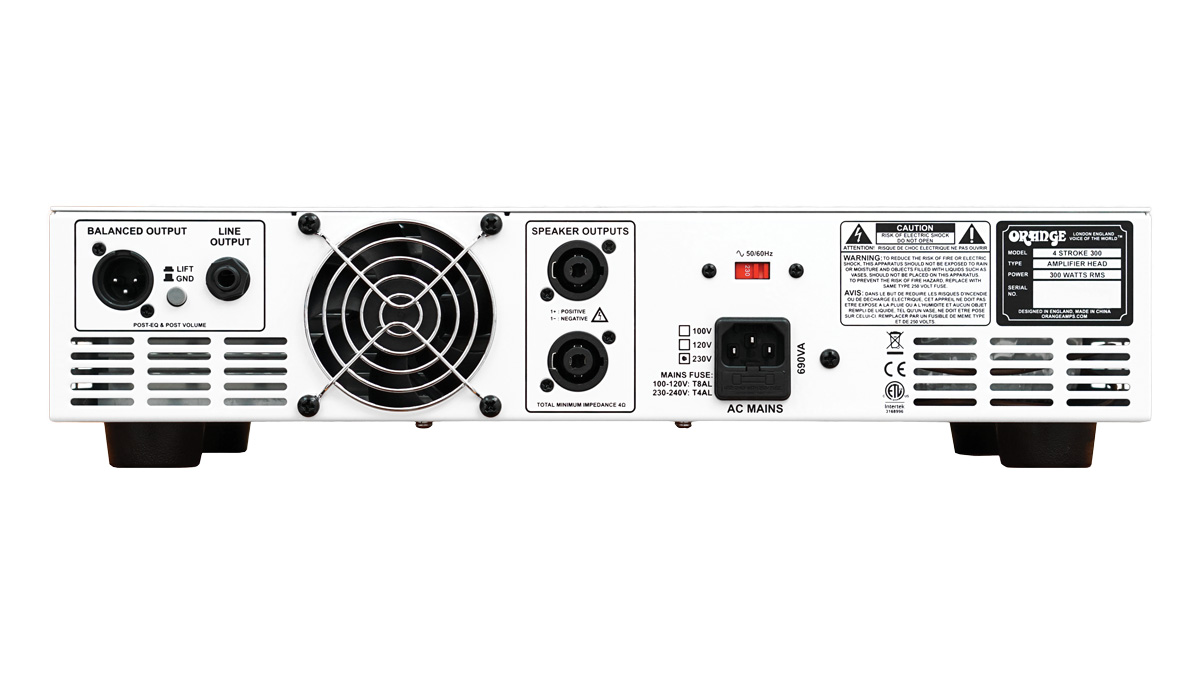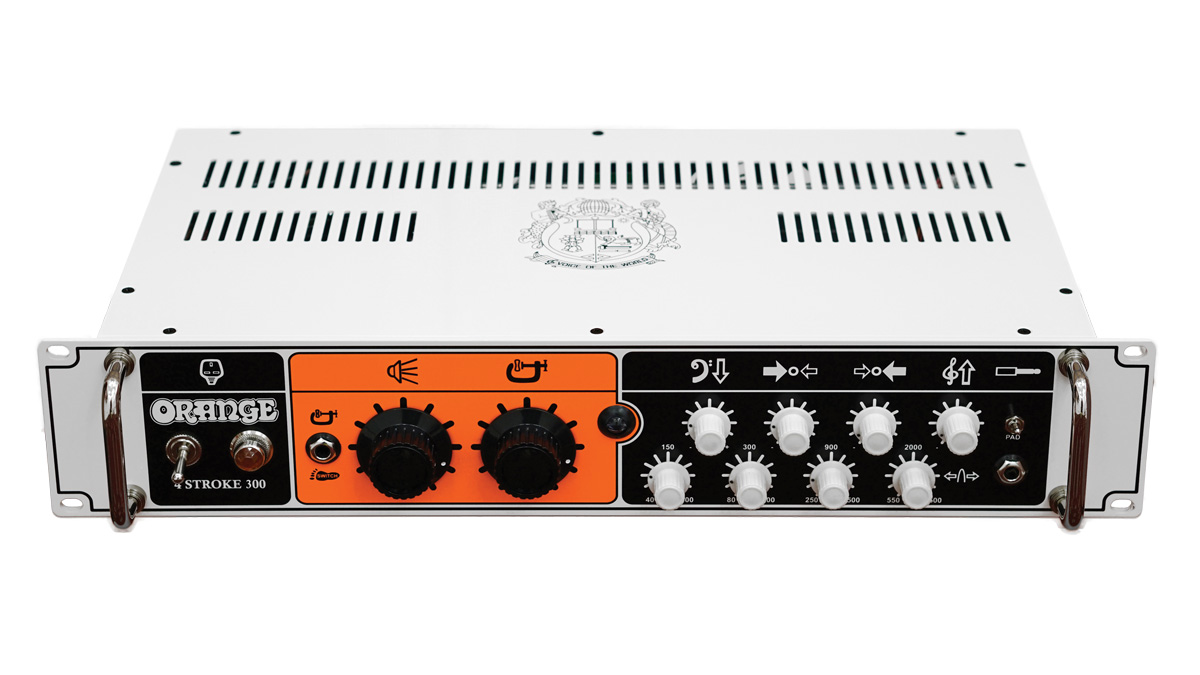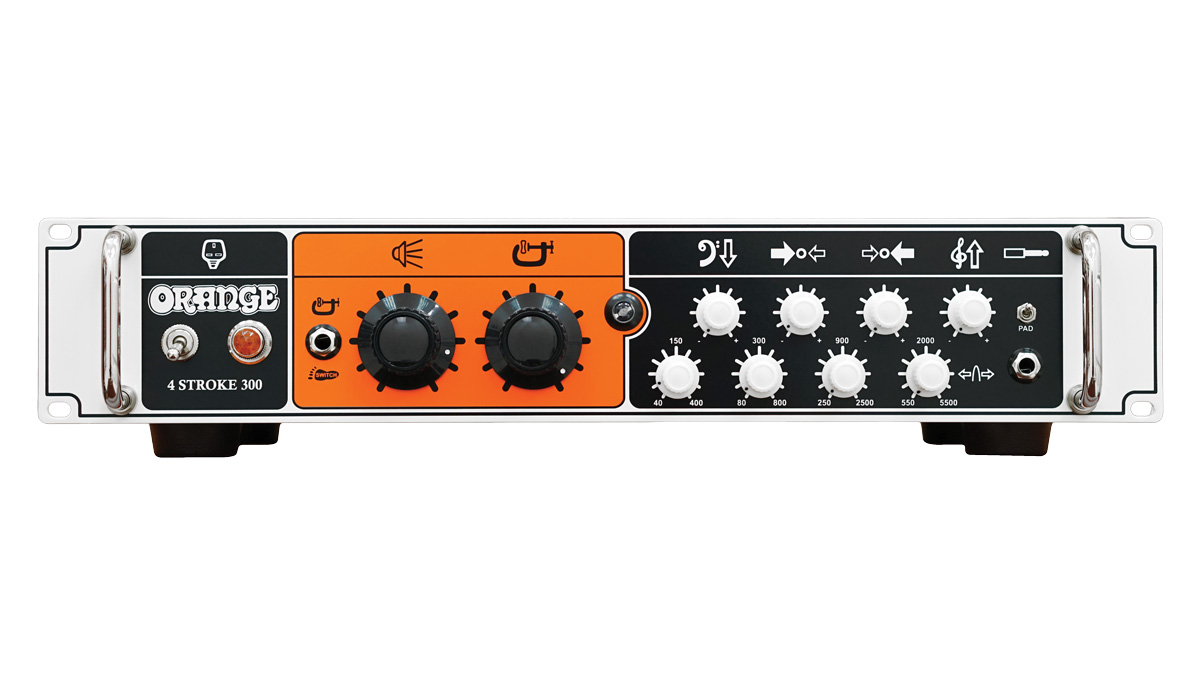MusicRadar Verdict
Loud, unapologetic and sounds wonderful.
Pros
- +
Straightforward and practical Class A/B amp with a superb EQ section and compressor.
Cons
- -
No gain stage or FX loop.
MusicRadar's got your back
The new 4 Stroke range of bass heads from Orange consists of two models, a 500-watter and this, the 300-watt version.
Both feature the same preamp and front panel design in a solid 2U steel case. There was a time when something as utilitarian as a bass amp would usually be black and rather dull to look at. Not so now: this amp is a great example of that. It’s almost a shame to hide it in a rack case, but at least when we do we still have the front panel to look at - and it is truly something to behold.
The bold black, white and orange colours and Flash Gordon-style pictograms, as well as the oversized volume and compression controls, all add up to something that’s typically Orange - bold, brash and different. And it doesn’t just look good: the quality of the construction and components is first-rate, a fact borne out by the silky smooth controls and pin-sharp printing on the front and back panels.

This level of quality is also evident when we have a peek inside and take a moment to consider how this thing ticks. Firstly, there are several features here that are critical not just to the Orange design ethos, but also to the way in which the 4 Stroke 300 ultimately sounds. First and perhaps most important of these is the all-analogue class A/B power amp section shared with the Orange OB-1 amp.
Just as the advances made in transistor design in the 60s and 70s led to class A/B amps slowly taking over from the valve amps of decades before, so nowadays bass amps are increasingly using class D digital technology. There’s no doubt that these class D amps have several advantages, not least the huge savings in terms of weight and cost.
With our Fender Jazz five-string plugged in, the sound was massive, and not just because of the cab size
However, there are some drawbacks, because the analogue circuitry and transformers in class A/B amps have inherent properties that give them a powerful, muscular sound. The 4 Stroke has the amplifying equivalent of a big old V8 engine, which results in a bass tone with weight and authority - one with solid fundamentals, a warm, smooth low end and bright and vivid treble that never strays into sterility or harshness.
Taking pride of place on the control panel is the EQ section. Unlike most Orange bass amps, which have simple treble, middle and bass controls, here we’re treated to a comprehensive active four-band parametric, each band with a huge +/-18db of gain. This gives you the tools to adjust your bass sound with real accuracy, fine-tuning it to suit not just your instrument, but the ambient acoustics of the venue you’re playing at.
Next to the volume control is the compressor, a class A type which has just one control for adding or subtracting the rate of compression. This can then be switched in or out via a footswitch. It’s simple and works brilliantly.

To put the 4 Stroke through its paces we took it along to a hangar-sized live room at the studio we were working at and hooked it up to an Ampeg 8x10 SVT cab. The 4 Ohm load meant that we were drawing the full 300 watts from the amp. It’s a match made in bass heaven, and the sound was properly awe-inspiring. With our Fender Jazz five-string plugged in, the sound was massive, and not just because of the cab size.
Our next test was to A/B the 4 Stroke with our own Markbass LMIII head, which is rated at 450 watts as opposed to the 4 Stroke’s 300. The Orange amp proved to be every bit as loud, and with an openness that couldn’t be matched by the class D amp, as detailed and accurate as that sounded.
The compressor works in a quietly efficient way, and you can draw out some distortion with a bit of knob-twiddling. This works best at more subtle levels, where it evens out the transients and adds extra thump to the notes.
In some ways, the 4 Stroke is an amp of contrasts. It’s basic and certainly simple to use, and yet it has a comprehensive and powerful EQ section. There’s no gain stage and yet it’s still got that rock‘n’roll sound. It has an old-school class A/B amp section and retro graphics, and yet it has a thoroughly modern, chic design. Add a decent gain stage overdrive pedal, and you’ll be wanting for nothing.
“If they were ever going to do the story of Nero, probably the most decadent of all the emperors, they would have to use Roy Thomas Baker”: A tribute to the legendary producer of Queen, Alice Cooper, Journey and more
“Built from the same sacred stash of NOS silicon transistors and germanium diodes, giving it the soul – and snarl – of the original”: An octave-fuzz cult classic returns as Jam Pedals resurrects the Octaurus
What’s the buzz? Meet Yellowjacket, Cherry Audio's recreation of EDP’s trend-setting Wasp from 1978










